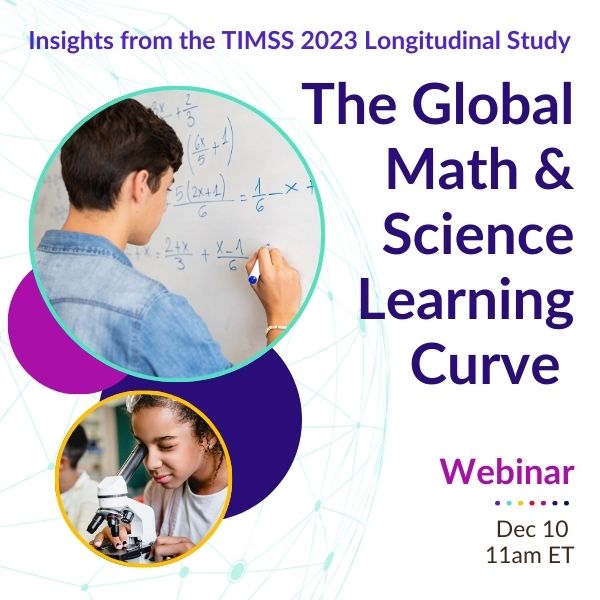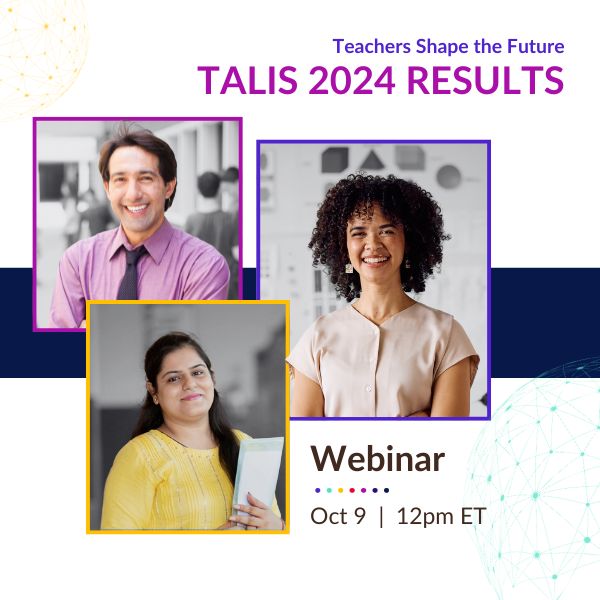The annual Education at a Glance report provides comparative data on education in over 70 countries with information on investment and organization of education systems, as well as access, outcomes, and achievement of learners. This year for the first time, the report includes U.S. data at the state level, allowing for individual states to compare themselves against international benchmarks. This year’s report also had a special focus on career and technical education (CTE).
On the September 12th release of the report, NCEE hosted a webinar led by NCEE’s CEO, Dr. Vicki Phillips. The webinar began with an overview of this year’s findings by OECD’s Director of Education and Skills, Andreas Schleicher. Following the presentation, Phillips guided a panel of experts in conversation about current trends and future priorities for CTE pathways in the United States. The panel included:
- Dr. Amy Loyd, Assistant Secretary at the U.S. Department of Education;
- Dr. Toriano Holloway, Superintendent of Vicksburg Warren School District in MS;
- Jérôme Hügli, Deputy Head of International Education Programmes at the Swiss State Secretariat for Education, Research and Innovation SERI; and
- Matt Sigelman, President of the Burning Glass Institute.
What the Data Says
Employment Outcomes for CTE Pathways
Schleicher began by stressing the importance of giving young people strong vocational options earlier on in their education, which the data show is linked to higher employment rates after high school. But Schleicher warned that earnings outcomes are often lower for those who opt for CTE pathways compared to those who go on to a college degree, a gap which widens over time. He suggested that successful CTE programs emphasize tailoring their offerings to labor market demand, promoting apprenticeships and work-based learning, and bridging gender gaps in vocational pathways. Schleicher stressed the importance of creating a seamless connection between CTE and further education so that technical pathways are never dead-ends for students.
Funding, Teacher Salaries, Class Time
Beyond this year’s special focus on CTE, the OECD report also includes a wide range of data indicators. Using state-level data—a first for the report series—Schleicher explained that while most individual states spend more per student than the OECD average, teacher salaries compared to other college-educated professions are relatively low in most states.
Schleicher noted in most U.S. states, students spend more time in the classroom than the average for OECD countries. This suggests a need for a deeper examination of various factors outside of class time, including curricular design and support resources, to further enhance education systems and elicit greater student outcomes.
The share of adults with college degrees is above the OECD average for most U.S. states. The data also show that individuals with advanced qualifications, like college degrees, tend to be less susceptible to conspiracy theories and more engaged in civic activities, suggesting that education has broader societal benefits beyond economics.
The world is an amazing laboratory. You can see just lots of solutions, when you look around.
Panel Discussion
Phillips then opened the discussion to the full panel for a discussion of what the United States is getting right in the field of CTE, and where the main challenges might be.
A National Initiative
Dr. Amy Loyd noted that with fifty states each with their own education systems, questions about education in the United States are always more complex. However, she outlined a new national initiative being rolled out by the Department of Education under Secretary Miguel Cardona with a bold vision of ensuring that every student in high school is on a viable career pathway. The initiative includes four keys to career success:
- Earning college credit while still in high school,
- Taking CTE classes in high school that lead to industry-sought credentials,
- Gaining workplace experience through things like paid internships, and
- Accessing ongoing personalized career advising.
We need to think about no wrong doors and no dead ends when it comes to our education and training systems.
Impact in Action
Superintendent Toriano Holloway has seen a similar strategy in practice with his district’s emphasis on all education leading to employment. His district, Vicksburg-Warren in Mississippi, has been working to ensure that students in the district find their voice and take control of their future. This includes exposing students to career choices as early as pre-k, and helping students in middle school explore sixteen job clusters. In high school, students are encouraged to choose an exit strategy: employment, enlistment, enrollment, or entrepreneurship. As a result, students are leaving high school with a plan and a viable pathway to their goals.
The district has leaned heavily on partnerships with industry to build this system, with 35 businesses in formal partnerships and an additional 500 business leaders who consult on career academies.
We’re proud that kids are finding their voice and leaving us with a plan on what they want to do after they leave the Vicksburg-Warren school district.
Links to Industry
Jérôme Hügli echoed the importance of the private sector in building viable CTE pathways. In Switzerland, industries lead efforts to update curriculum so that it remains relevant, and industry also provides the bulk of on-the-job training via apprenticeships. Teachers in CTE programs are recruited from a pool of active professionals who continue to work in their field while teaching part-time. This ensures that their skills and industry knowledge are up-to-date.
[In Switzerland] we have a system where the private sector is not only a stakeholder, it’s a co-owner of the vocational system… [with] a very clear vested interest in keeping the quality of education training very high, and to keep it relevant with current trends and ever-changing needs.
Current Labor Market Needs and the Advent of AI
Matt Sigelman pointed out the rapidly changing nature of the skills that employers are looking for in today’s economy, both in the United States and globally, particularly in light of the advances in generative AI. He highlighted five sets of skills which are growing the fastest in labor market demands at present: machine learning and AI, cloud skills, data analytics, product management, and social media skills. He further explained that it’s often the intersection of skills, which are combining in new ways in today’s workforce, that is most valuable to employers.
The United States has an impressive infrastructure for CTE training…
That infrastructure is our community college system.
Looking to the Future
Phillips then asked the panel to consider the opportunities and challenges the United States will face going forward as jobs and workplaces change.
Loyd responded with an emphasis on eliminating the barriers that currently exist between k-12 systems, higher education, CTE programs, and business and industry. She explained that in blurring the lines between these systems we can be more flexible and inclusive, with fewer dead-ends for students. Loyd is hopeful that community colleges will have a strong role in bridging the gap between credentials and industry needs.
International Data, Local Application
Phillips closed the session asking how U.S. schools and districts can make the best use of the international comparisons and information in the Education at a Glance report. In response, Schleicher pointed out that we can look to other countries for models that work. Education systems look very different around the world, but if we see the world as a laboratory, we can look to international comparisons to find viable solutions at home.




